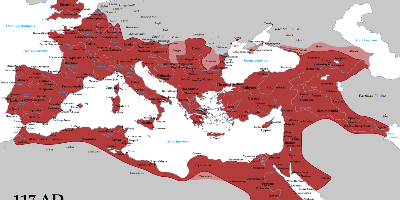1 janv. 46 - Province of Thracia Organized
Description:
The Odrysian kingdom of Thrace became a Roman client kingdom c. 20 BC, while the Greek city-states on the Black Sea coast came under Roman control as civitates foederatae ("allied" cities with internal autonomy). After the death of the Thracian king Rhoemetalces III in 46 AD and an unsuccessful anti-Roman revolt, the kingdom was annexed as the Roman province of Thracia.The new province encompassed not only the lands of the former Odrysian realm, but also the north-eastern portion of the province of Macedonia as well as the islands of Thasos, Samothrace and Imbros in the Aegean Sea. To the north, Thracia bordered the province of Moesia Inferior; initially, the provincial boundary ran at a line north of the Haeumus Mountains, including the cities of Nicopolis ad Istrum and Marcianopolis in Thracia, but by the end of the 2nd century AD the border had moved south along the Haemus. The area of the Thracian Chersonese (modern Gallipoli Peninsula) was excluded from its governor's purview and administered as part of the emperor's personal domains. The province's first capital, where the Roman governor resided, was Heraclea Perinthus. Thracia was an imperial province, headed initially by a procurator, and, after c. 107/109, by a legatus Augusti pro praetore. Otherwise, the internal structure of the old Thracian kingdom was retained and only gradually superseded by Roman institutions. The old tribal-based strategiai ("generalcies"), headed by a strategos ("general"), were retained as the main administrative divisions, but some villages were grouped together into kōmarchiai ("village headships") or subordinated to neighbouring cities (the two Roman colonies of colonia Claudia Aprensis and colonia Flavia Pacis Deueltensium and several Greek cities, many of whom were founded by Trajan), which were set apart. In the mid-1st century, the strategiai numbered fifty, but the progressive expansion of the cities and the land assigned to them reduced their number: by the early 2nd century, they had decreased to fourteen, and c. 136 they were abolished altogether as official administrative divisions.
Ajouté au bande de temps:
Date:
1 janv. 46
Maintenaint
~ Il y a 1981 ans
